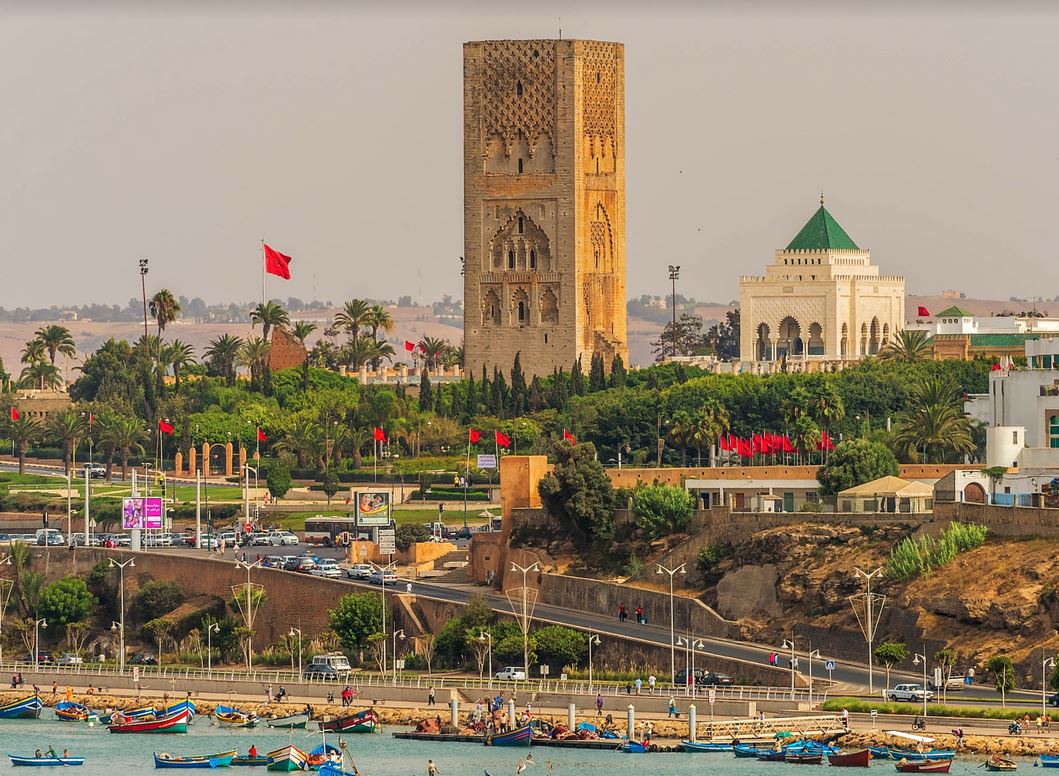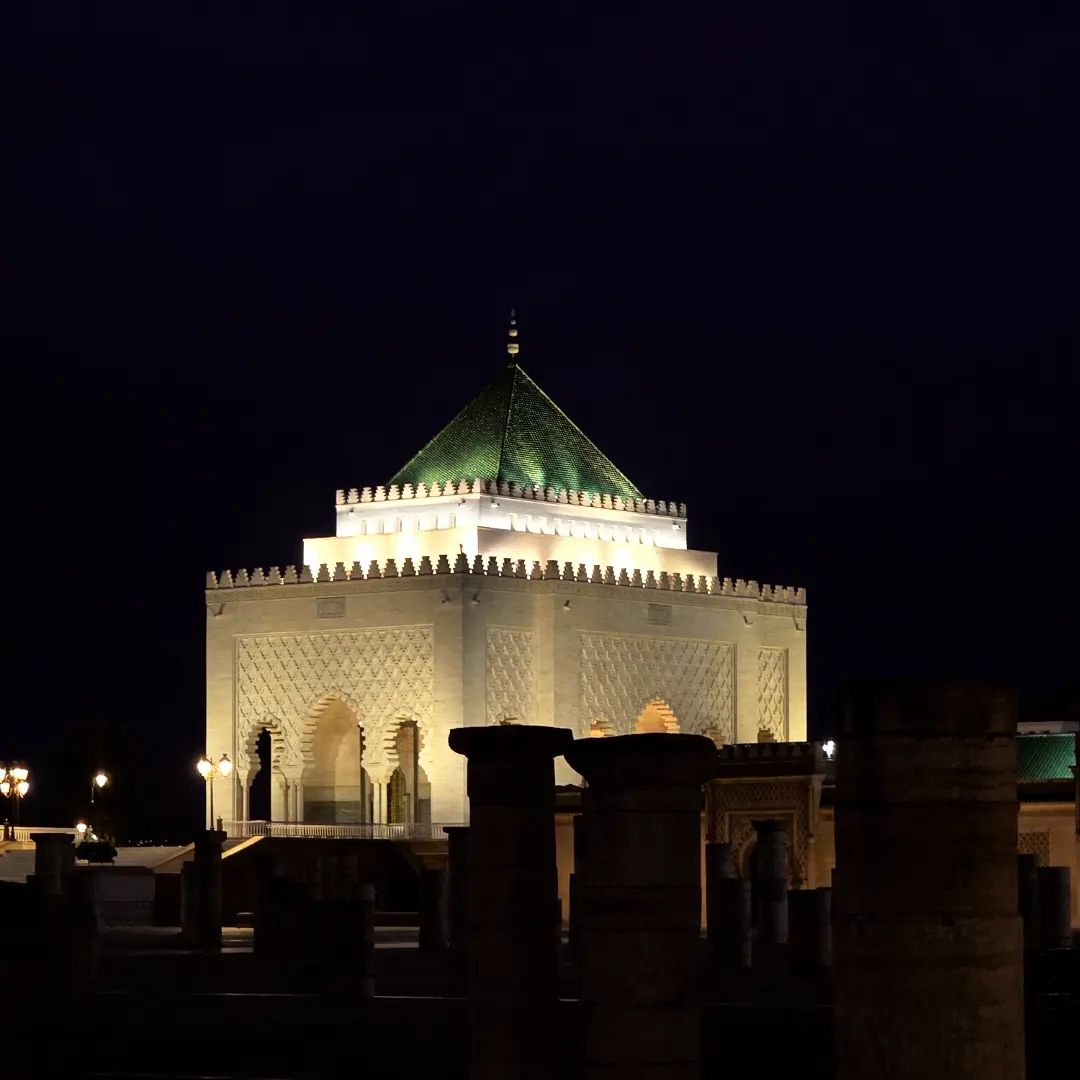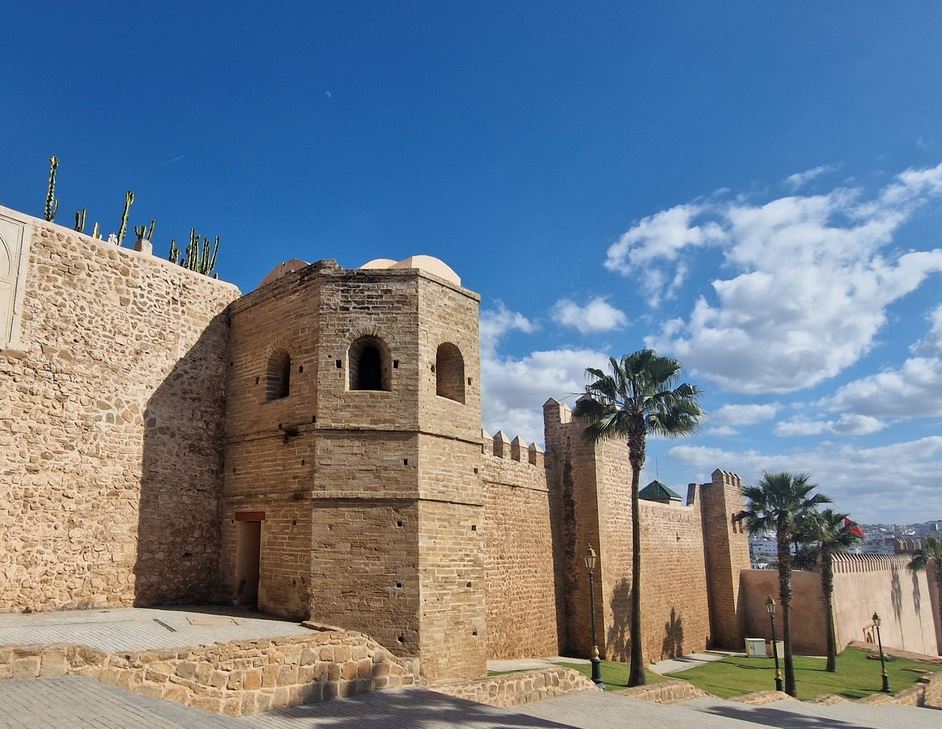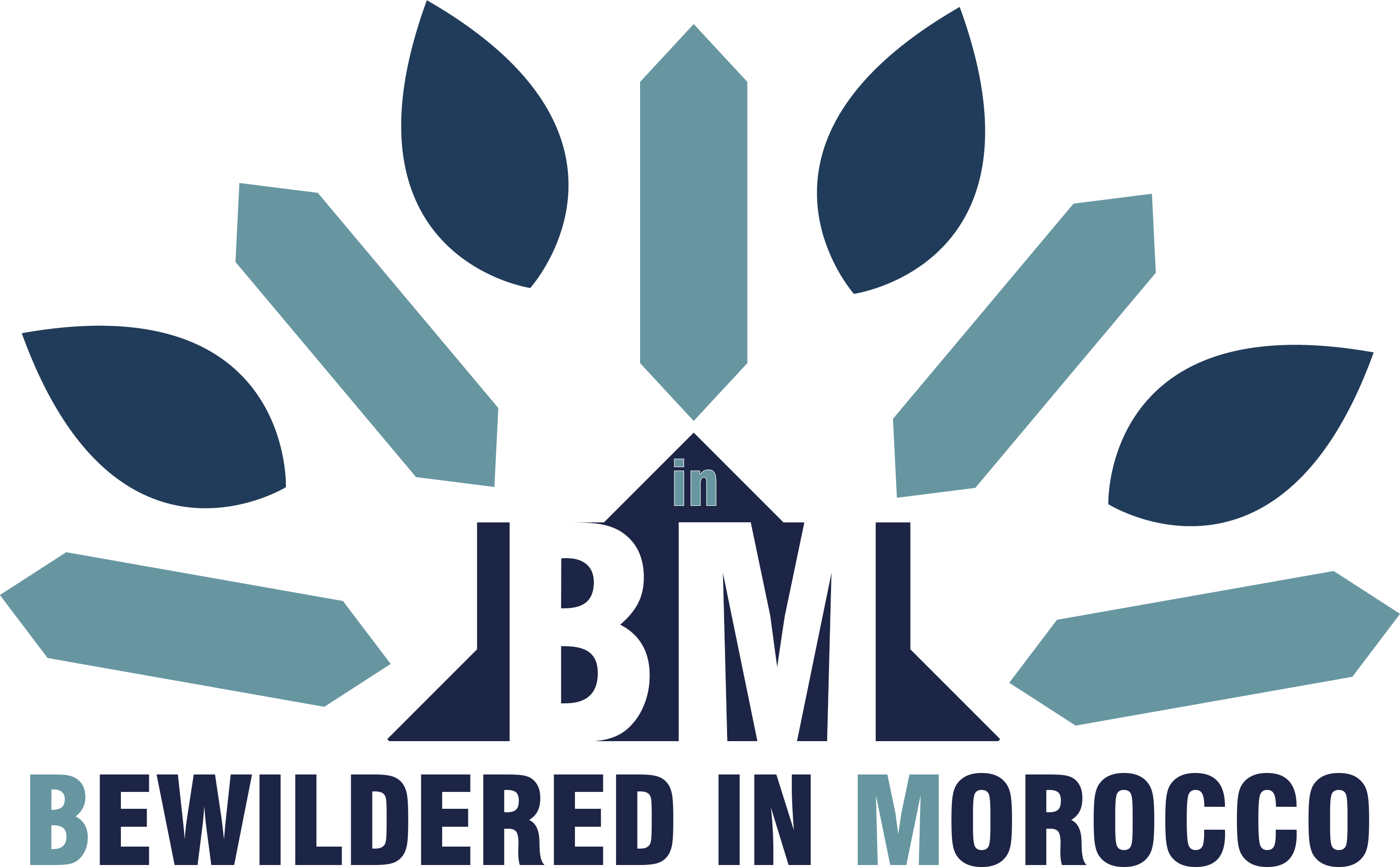When most people think of Morocco, Marrakech often comes to mind. Many travelers mistakenly believe it's the country's capital. Let me set the record straight – Rabat is Morocco's true capital, and spending 24 hours here reveals why this elegant city deserves more recognition than it gets.
I recently spent an incredible day exploring Rabat, and I was amazed by how different the atmosphere feels compared to Morocco's more touristy destinations. The air is fresher, the pace more relaxed, and there's a dignity to this city that reflects its status as the political heart of the kingdom.
Starting Early: The Best Time to Explore Rabat
My adventure began at 8 AM, and I can't stress enough how perfect this timing was. The early morning hours, between 8 and 10 AM, offer the most pleasant experience in Rabat, Morocco's capital. The streets are calm, the light is beautiful, and you'll have most attractions practically to yourself.
This is dramatically different from places like Marrakech, where crowds can be overwhelming even in the early hours. In Rabat, you can actually breathe and take your time to appreciate the city's remarkable architecture and peaceful atmosphere.
Hassan Tower: Morocco's Unfinished Masterpiece

The Monument That Defines Rabat
The Hassan Tower stands as perhaps the most emblematic monument not just of Rabat, Morocco's capital, but of the entire country. This 12th-century minaret was originally planned to reach over 80 meters in height, but construction stopped at 44 meters – still an impressive feat for its time.
Walking around the tower in the morning, I was struck by how few tourists were there. Just a couple here and there, some families with children, but nothing like the crowds you'd find at similar monuments in other Moroccan cities. The site remains refreshingly "breathable," as locals would say.
Understanding the Historical Significance
The pillars scattered around the tower were meant to support a massive mosque. Standing there, I tried to imagine what this space would have looked like completed – with walls, a roof, and the full grandeur of a 12th-century architectural marvel. This project was meant to rival the greatest Muslim powers of the world, proving that Morocco was not playing in the minor leagues.
The cleanliness and maintenance of the site immediately impressed me. There's a level of civic pride and courtesy here that you notice right away. This is where Morocco shows its most refined face.
Mausoleum of Mohammed V: A Modern Architectural Gem

Where History Meets Reverence
Just beside Hassan Tower, you'll find the Mausoleum of Mohammed V, a much more recent addition to Rabat's Morocco capital skyline. Construction began in 1961 and was completed in 1971, representing modern Moroccan craftsmanship at its finest.
The calm that reigns inside this mausoleum is remarkable. Everyone respects the space – even children maintain a quiet reverence that's genuinely moving. I expected noise and chatter, but instead found a peaceful sanctuary where whispers are the loudest sounds you'll hear.
Architectural Marvel in Gold
The ceiling is adorned with gold, and every surface tells a story through intricate Moroccan design. I could have spent hours just contemplating the details. The mausoleum houses the tomb of King Mohammed V, who secured Morocco's independence in 1956, along with other members of the royal family.
You can do a complete 360-degree turn inside, and every angle reveals something beautiful. It's a masterpiece of Moroccan architecture that demonstrates the country's artistic evolution from medieval to modern times.
Mohammed VI Tower: Modern Morocco Rising
Looking toward the future, the Mohammed VI Tower represents contemporary Rabat, Morocco's capital ambitions. This modern structure reaches 250 meters in height and symbolizes how Morocco has always shown its power through architecture – from the medieval Hassan Tower to this sleek, modern skyscraper.
The contrast between the ancient and modern creates a fascinating skyline that tells the story of Morocco's journey through time.
The Grand Theatre: Rabat's Cultural Crown Jewel
The Grand Theatre deserves special mention – it looks like a spaceship landed in the middle of the city! This monument alone could fill an entire video. At night, with its lights illuminating the structure, it's simply magnificent. It represents Rabat's Morocco capital status as a cultural hub, not just a political center.
Kasbah des Oudayas: A UNESCO World Heritage Gem

Living History in Morocco's Capital
The Kasbah des Oudayas is classified as a UNESCO World Heritage site, and walking through it feels like stepping back in time. This historic fortress was essentially a medieval gated community – controlling who entered and who left. Today, it's still a living neighborhood where people actually reside.
You'll see satellite dishes on ancient rooftops, laundry hanging from traditional balconies, and families going about their daily lives within these historic walls. There are small cafés and restaurants tucked into corners, creating a neighborhood that's both historical and vibrantly alive.
The Beauty of Fewer Crowds
What struck me most about the Kasbah was how few tourists were there. I could stop, wander, and contemplate wherever I pleased, almost as if the entire Kasbah belonged to me. For someone used to the crowds of more famous Moroccan destinations, this felt like a luxury.
The views from the Kasbah are breathtaking – you can see across the water and take in the full scope of Rabat's Morocco capital setting. It's honestly one of the most beautiful places I've ever visited.
Experiencing Local Life: Food and Culture
Traditional Moroccan Flavors
No exploration of Rabat, Morocco's capital would be complete without experiencing the local food scene. I had the pleasure of trying traditional Moroccan pastries – including what locals call "Moroccan donuts" – from street vendors who've been perfecting their craft for generations.
The interaction with local vendors was warm and welcoming. There's something special about how Rabat residents treat visitors – with genuine hospitality rather than the sometimes overwhelming attention you might encounter in more tourist-heavy cities.
Evening Dining: A Culinary Journey
For dinner, I experienced traditional Moroccan cuisine at a local restaurant. The ritual of washing hands at a "living faucet" (a server who pours water over your hands) was my first encounter with this tradition – slightly embarrassing but charmingly authentic.
The prices were surprisingly reasonable for a capital city. We enjoyed:
- Fresh salads with local ingredients
- Perfectly prepared chicken that was honestly the best I'd ever tasted
- Tajine with prunes – a perfect blend of sweet and savory flavors
- Traditional Moroccan desserts
The chicken was particularly memorable – small, local, and cooked to perfection. The tajine, with its mix of meat and prunes, exemplified how Moroccan cuisine balances contrasting flavors so beautifully.
The Social Fabric of Rabat
Where Locals Unwind
As evening approached, I discovered how Rabat's Morocco capital residents spend their leisure time. Families gather in public spaces, children play safely, and there's a sense of community that's both relaxed and secure.
The conversations with locals revealed their pride in their city. They spoke about the safety, the cleanliness, and the quality of life that makes Rabat special. There's no security concerns here – families bring their children to play, and everyone feels comfortable enjoying the evening air.
A Different Morocco
What became clear throughout my 24 hours was that Rabat, Morocco's capital offers a completely different experience from the Morocco most tourists know. It's less touristy, more authentic, and allows you to see how modern Moroccans actually live their daily lives.
The civility and courtesy here are remarkable. People are genuinely friendly without the commercial pressure you might feel in more tourist-focused cities. Conversations flow naturally, and there's a sense that you're experiencing real Moroccan culture rather than a performance for visitors.
Practical Tips for Your Rabat Adventure
Best Times to Visit
- Early morning (8-10 AM): Perfect for monument visits with minimal crowds
- Late afternoon: Great for exploring the Kasbah and waterfront areas
- Evening: Ideal for experiencing local social life and dining
Getting Around
The city is very walkable, and most major attractions are within reasonable distance of each other. The public transportation system is reliable, and locals are helpful with directions.
What Makes Rabat Special
Unlike other Moroccan cities, Rabat, Morocco's capital allows you to experience authentic Moroccan culture without feeling overwhelmed by tourism. The city maintains its dignity and authenticity while still being completely accessible to visitors.
Why Rabat Deserves Your Attention
My 24 hours in Rabat, Morocco's capital completely changed my perspective on this city. While Marrakech and Casablanca grab the headlines, Rabat offers something equally valuable – an authentic glimpse into modern Morocco where ancient history and contemporary life blend seamlessly.
The city's monuments rival any in the world, its food scene is outstanding, and its people embody the best of Moroccan hospitality. Most importantly, you can experience all of this without fighting crowds or feeling like you're in a tourist bubble.
Have you visited Rabat? What was your experience like in Morocco's true capital? I'd love to hear your thoughts and stories in the comments below. And if you're planning a trip to Morocco, consider adding Rabat to your itinerary – you might be surprised by how much this underrated gem has to offer.
